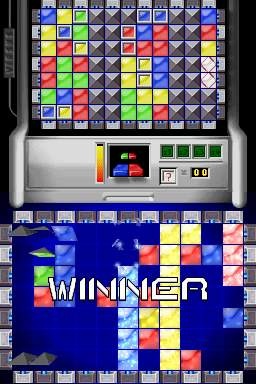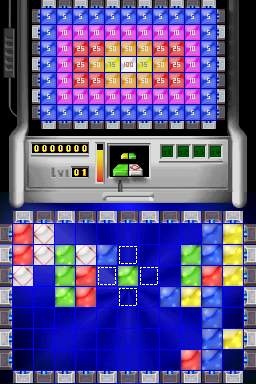A good puzzle game has a way of crawling under your skin. It's easy to lose yourself in that zone of addiction, where the game wields complete control over your left brain and you have no choice but to succumb. Konductra is not such a game. Instead of relying on an outwardly simple design that's difficult to master, it gets bogged down by its own thoughtful premise. Playing Konductra is not a challenge--it's a chore.

It didn't have to be this way, because there's a good underlying idea behind the gameplay. You start with a game grid that's surrounded by two types of conductors, light and dark. You are given a two-block token to place on the grid, each block a different color. The goal is to connect one conductor to another by laying a chain of the same color. However, you can only connect conductors of the same shade. Once a chain is created, you must draw a line from one end to the other to connect the conductors and destroy the chain. Once you've started conduction and have created one chain, you can also trace around the edge of the board and enter from another conductor. The result is a megachain that earns you high points. There are also linking blocks that let you link other colors to a chain.
Konductra features score, versus, and task modes. Task mode is a lot like Lumines' puzzle mode. You get shapes of progressing difficulty to create in a single conduction. As you progress, these tasks can get quite tough, usually requiring you to fill the screen with various combinations of colors and designs and then eliminate them in a single long chain. The versus mode is available against the CPU and a local player, and in a nice addition, you can find opponents via Nintendo Wi-Fi as well. Even better, you can view the Wi-Fi high-score ladder on the game's official Web site. Versus mode adds some decent competitive elements to the puzzle-solving. As you eliminate blocks from your own playing field, that flips those blocks on your foe's grid. To flip one back, you must tap on it a few times, depending on how far around it's spun.
While the versus mode is where Konductra's at its most difficult, it's also where it's most frustrating. In the best puzzlers, you get into a groove where your eyes, brain, and fingers work in perfect tandem with each other. Konductra never lets you find that groove because it requires too much conscious deliberation. For example, the top screen displays the next token that you will draw on the grid. When you avert your eyes to the bottom screen to place it, your puzzling senses never take over. Instead, you'll be thinking "blue-red" to remember the colors of the blocks. Then, once you're ready to make a conduction, you have to be very careful with the stylus. Particularly in the grid's border, where the conductors lay, there's very little room for a mistake. If you move the stylus just a bit off the narrow row or column, you lose the conduction and have to start from scratch. Between keeping the colors straight and worrying about the sensitive touch screen, you never have the chance to get in the zone. Throwing in the flipped block mechanic on top sounds like a great idea, but it's just annoying when one small stylus tremor can cost you the entire match.
Score mode fares slightly better, since you can take a little more time to consider your moves. You don't have forever, though, since a timer will be counting down. If you run out of time before placing the next token, the game will place it for you and you'll have to chain those blocks twice before they explode. Eventually, the game speeds up and adds more colors until the grid fills up and the match ends. Konductra isn't smart enough to know when you've run out of moves, however. If you are out of moves but there are still spaces for blocks, you have to wait for the timer to count down every token in the queue until it fills the remaining empty blocks. Only then does the game end, often forcing you to stare at the game board for a minute or more before you get the chance to enter your name onto the scoreboard. It's nice that you write your name on the touch screen for the scoreboard--but not so nice that there are only five high-score slots.

Even with seemingly so much going on in any given game, Konductra is boring and lifeless. A little personality could have helped matters, but the bare-bones presentation is unremarkable. There are no alternating skins, so you're stuck with a generic pulsing blue background surrounded by bland grey-and-white conductors. The blocks are shimmery and colorful, but no nicer than any number of free Flash PC games on the Internet. Accompanying it all is a small set of grating MIDI techno tunes that will make you glad you have the option to turn off the music.
Konductra's greatest asset is its tutorial, although the pleasant voice-over can't compensate for the game's unrewarding gameplay. It's got a decent premise, but the entire package does just the bare minimum to get by, and numerous Web sites offer better puzzle games for free, let alone for a $30 price tag. Nothing feels quite right in Konductra. Not only will you not get addicted, but you're not going to have much fun, either.